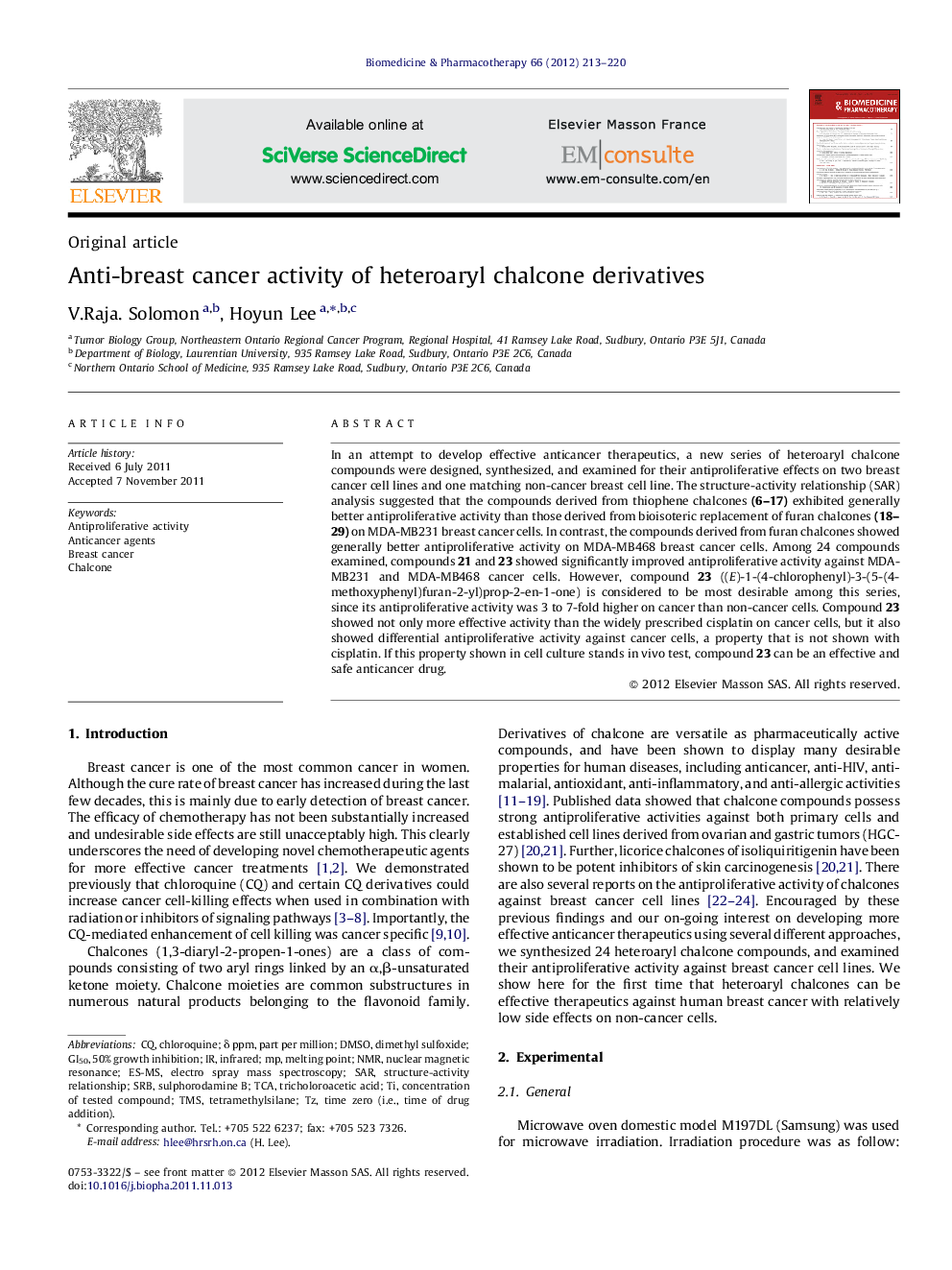| Article ID | Journal | Published Year | Pages | File Type |
|---|---|---|---|---|
| 2524350 | Biomedicine & Pharmacotherapy | 2012 | 8 Pages |
In an attempt to develop effective anticancer therapeutics, a new series of heteroaryl chalcone compounds were designed, synthesized, and examined for their antiproliferative effects on two breast cancer cell lines and one matching non-cancer breast cell line. The structure-activity relationship (SAR) analysis suggested that the compounds derived from thiophene chalcones (6–17) exhibited generally better antiproliferative activity than those derived from bioisoteric replacement of furan chalcones (18–29) on MDA-MB231 breast cancer cells. In contrast, the compounds derived from furan chalcones showed generally better antiproliferative activity on MDA-MB468 breast cancer cells. Among 24 compounds examined, compounds 21 and 23 showed significantly improved antiproliferative activity against MDA-MB231 and MDA-MB468 cancer cells. However, compound 23 ((E)-1-(4-chlorophenyl)-3-(5-(4-methoxyphenyl)furan-2-yl)prop-2-en-1-one) is considered to be most desirable among this series, since its antiproliferative activity was 3 to 7-fold higher on cancer than non-cancer cells. Compound 23 showed not only more effective activity than the widely prescribed cisplatin on cancer cells, but it also showed differential antiproliferative activity against cancer cells, a property that is not shown with cisplatin. If this property shown in cell culture stands in vivo test, compound 23 can be an effective and safe anticancer drug.
